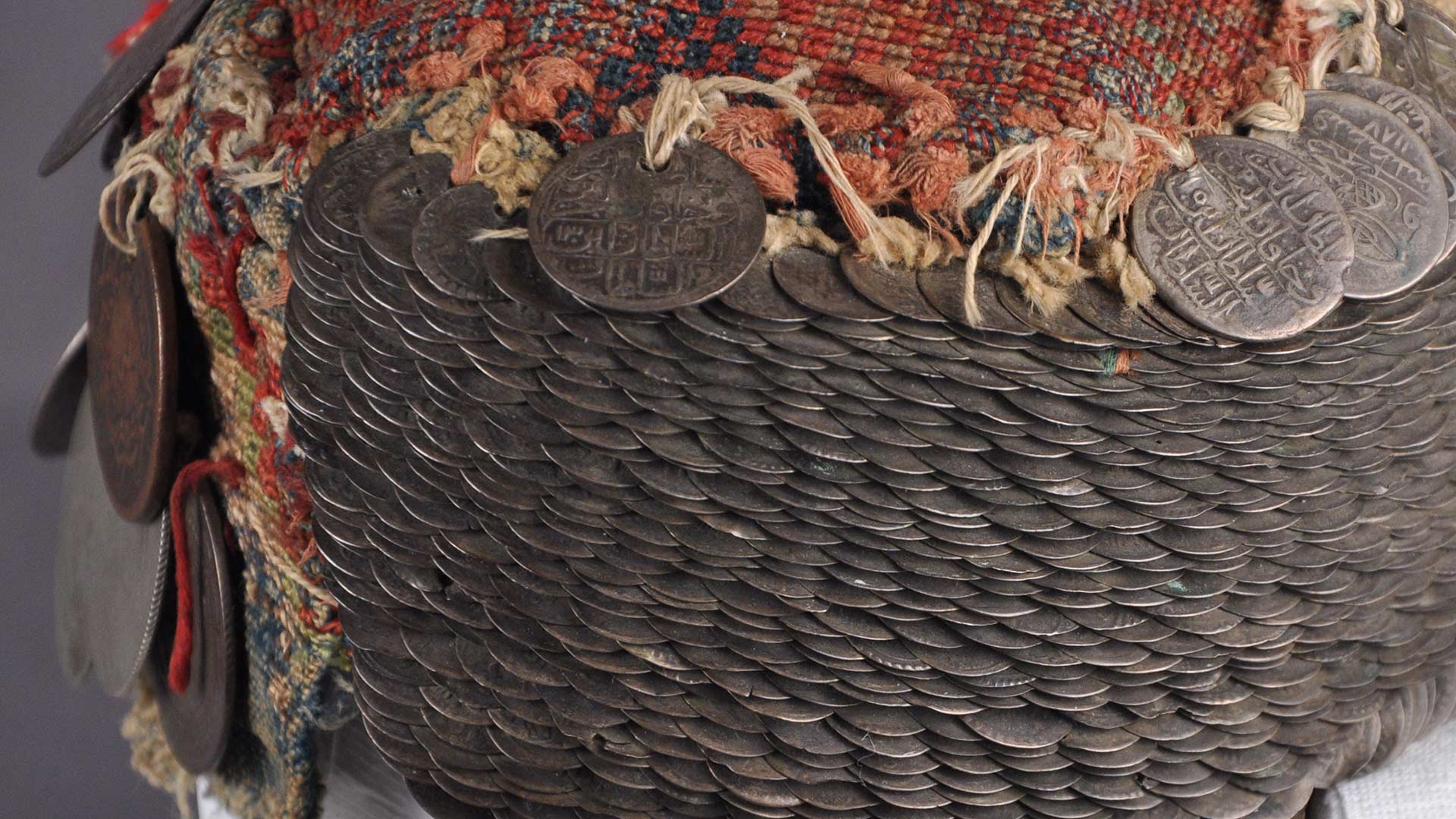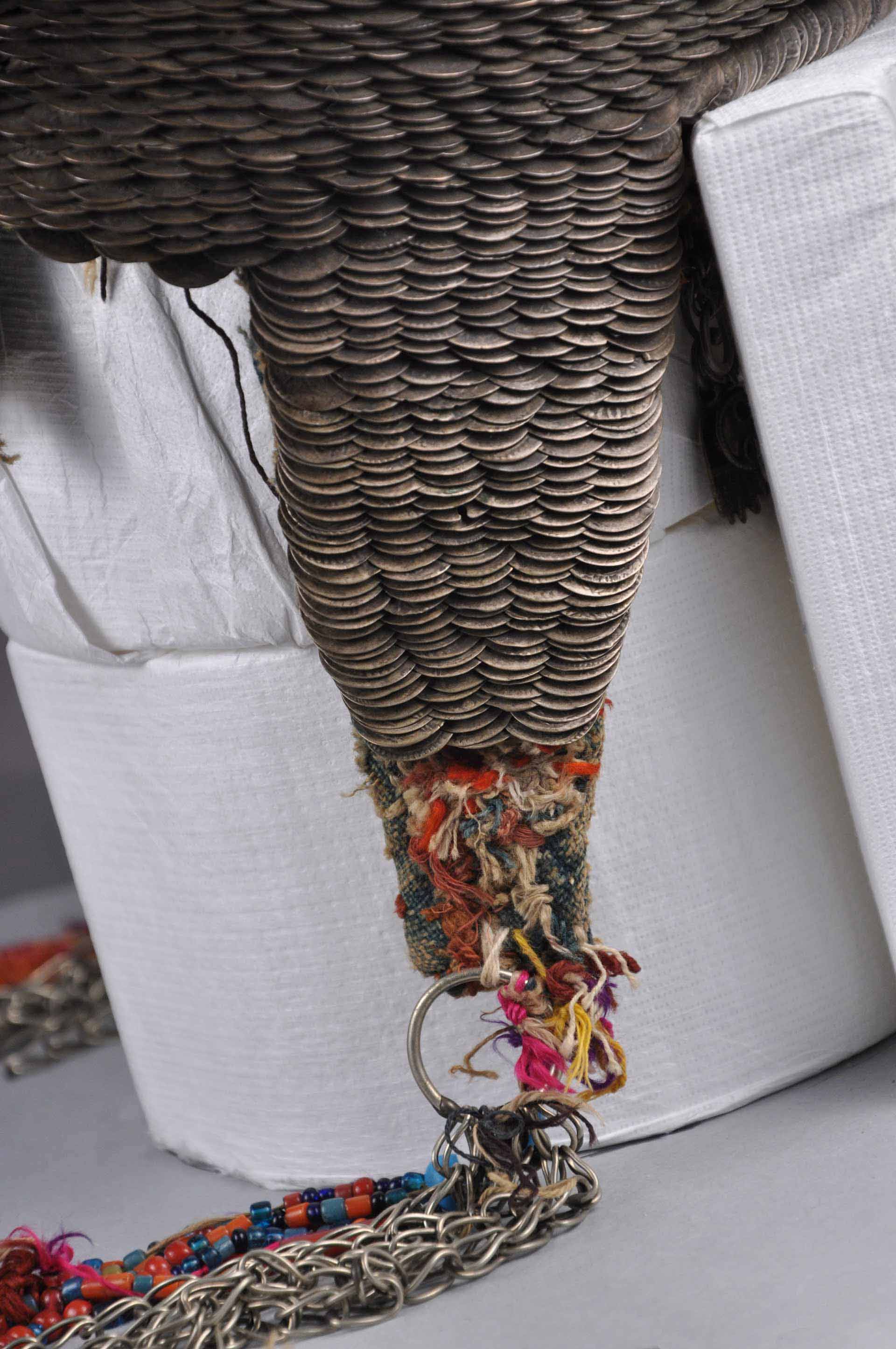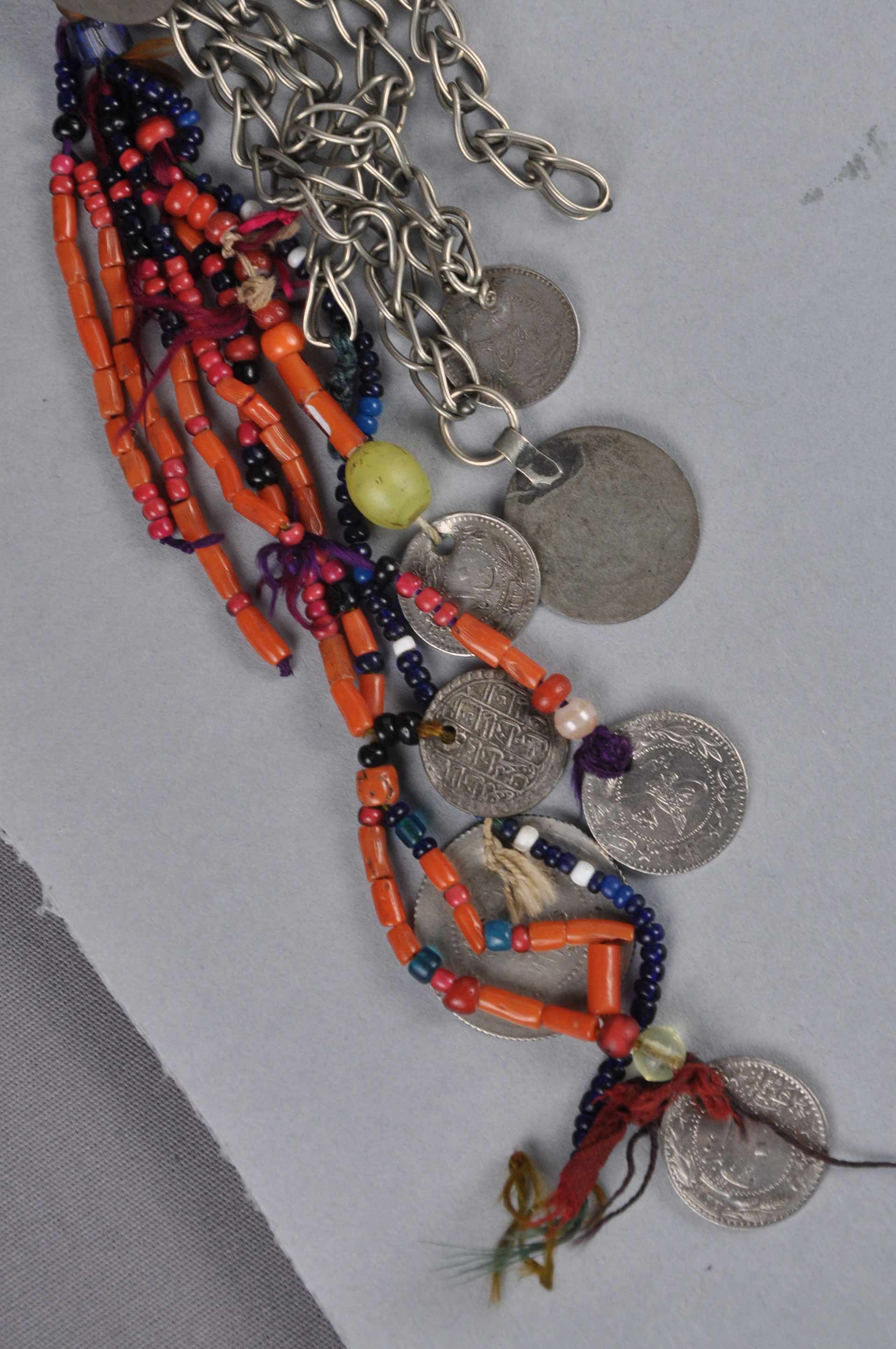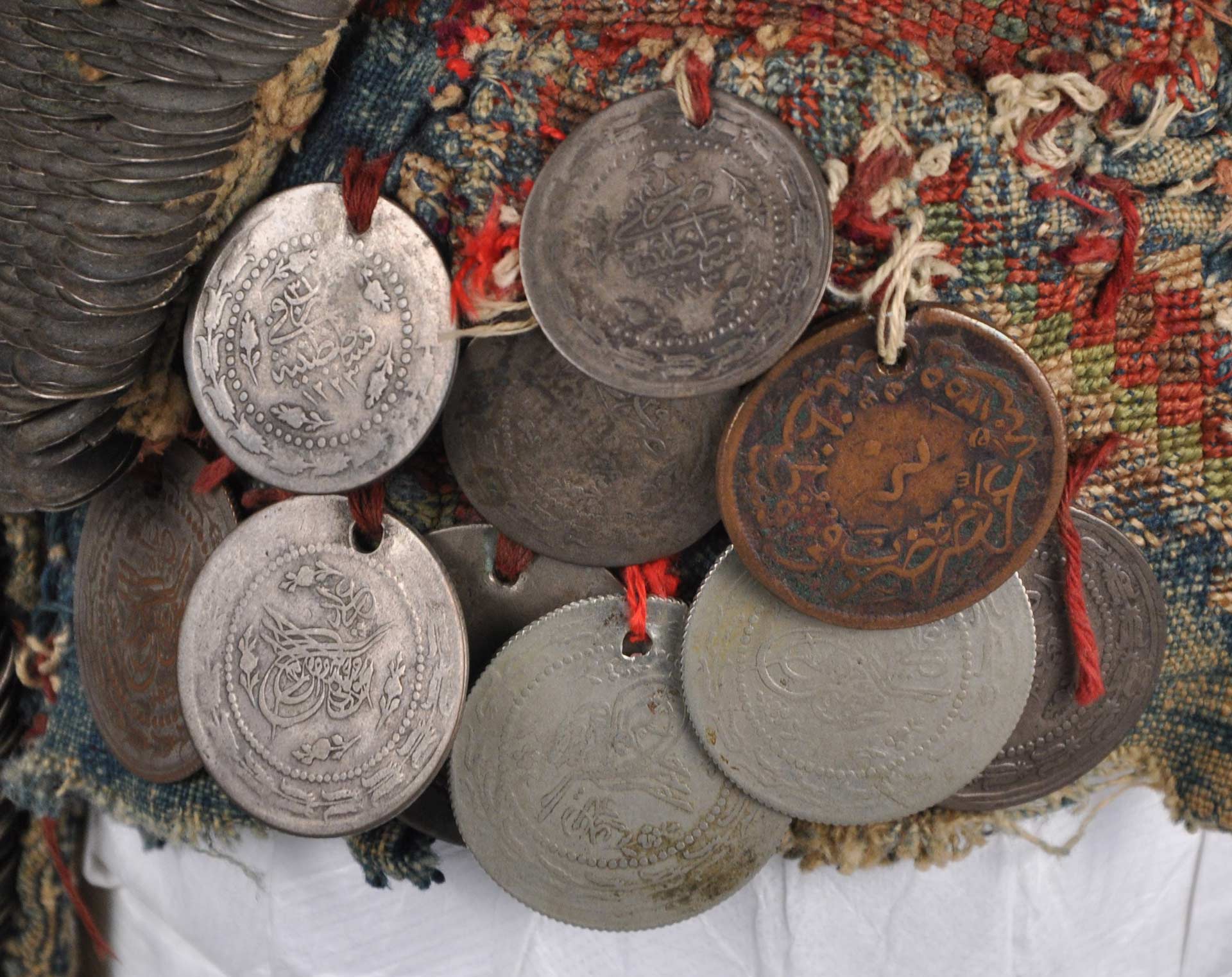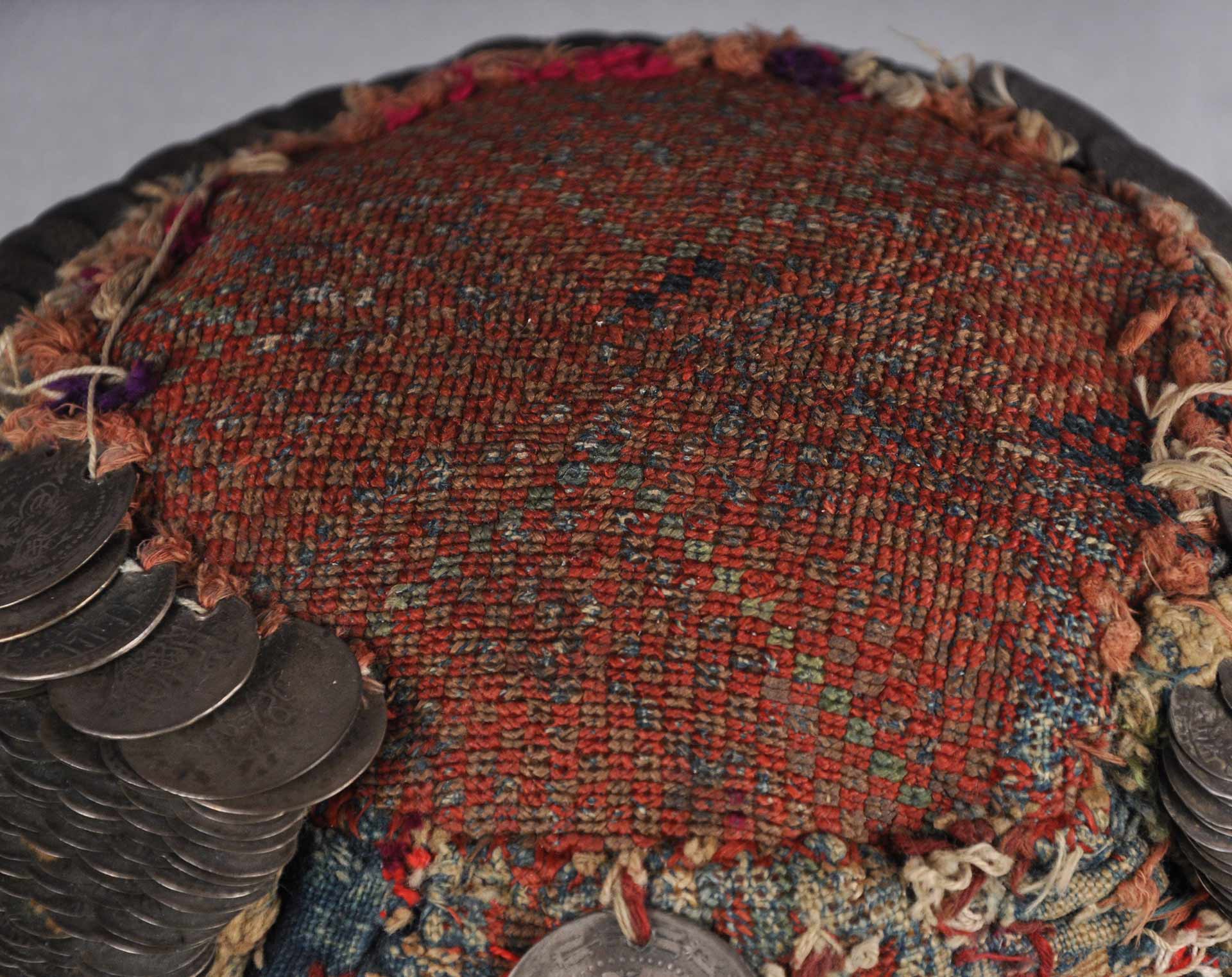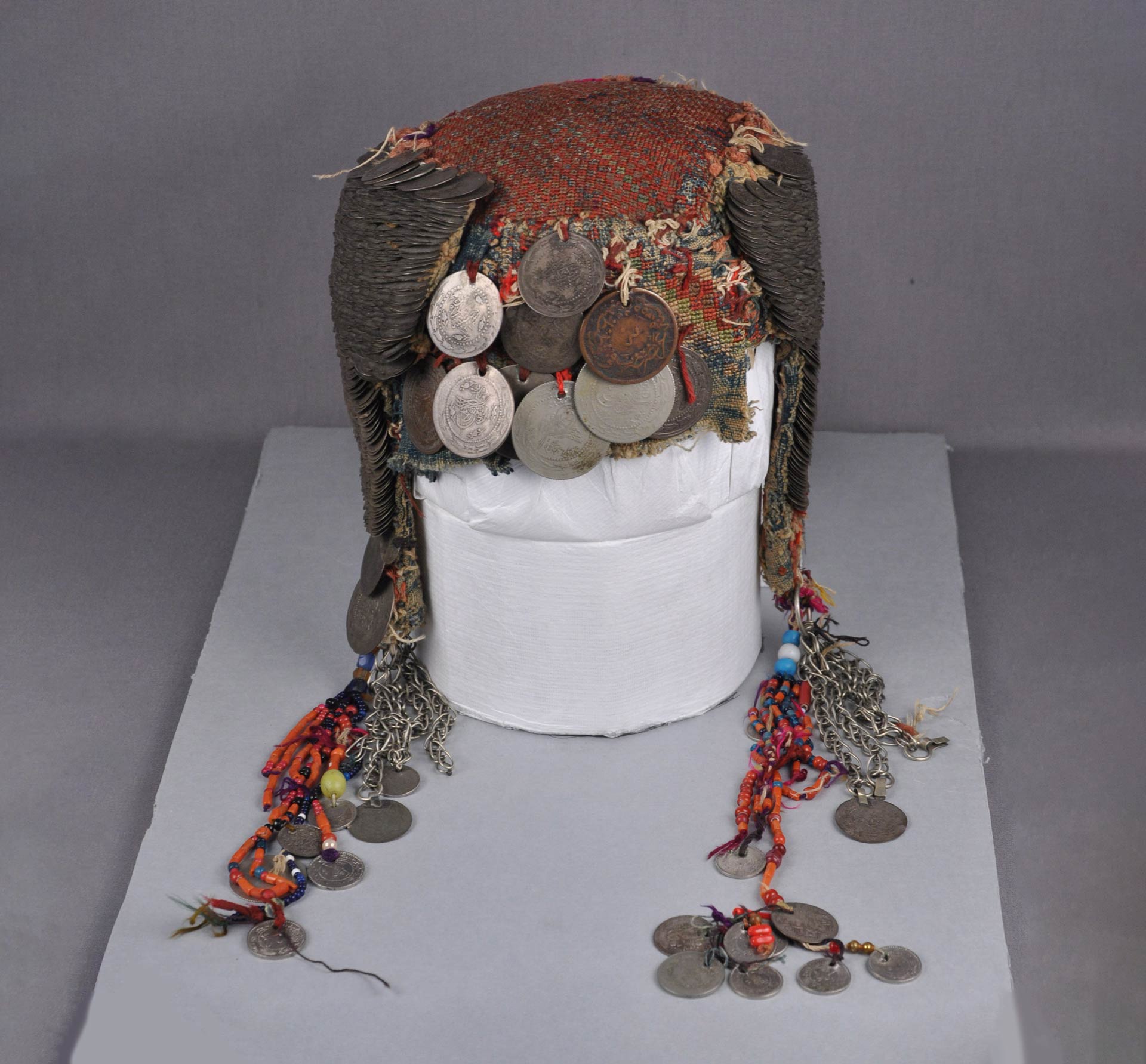
Featured Object: Wedding Hat
- Post Date: 5/15/2023
- Author: Beth Watkins
- Reading Time: 4 minute read
In Palestine, wedding ceremonies are one of life’s most important celebrations. This bride’s headdress is an example of the elaborate garments made for a wedding. During the nineteenth century and beginning of the twentieth century, brides in the southern hills of Hebron wore a headdress known as the wuqayat al-darahem, the “money hat.” This particular type of headdress was made commercially in Bethlehem and dates to before World War I. The wuqayat al-darahem was restricted to ceremonial use; brides sometimes wore it during the first wedding day procession but always for the second “going out to the well” ceremony. This ceremony took place after a week of seclusion and marked the bride’s first public appearance as a married woman. After a woman was married, she would wear a simpler version of the headdress—known as an ‘araqiyeh in Hebron—for everyday purposes.
Like many other styles of the headdress, the wuqayat al-darahem is adorned with coins. The girl’s father purchased the coins with money provided by the family of the groom. This exchange officially linked the two families together. As the largest gift given at the wedding, it expressed the high value of women, marriage, and family in Palestinian culture. The headdress not only symbolized the prestige of the bride’s father and husband but also of herself. The more coins and adornments, the higher the status of the bride and her family. Over the years, pieces could be added to the headdress or taken from it to make important purchases.
In some cases, a wuqayat al-darahem was communally owned, and a bride borrowed it for her wedding. If a woman and/or her family owned her headdress, one of her daughters would likely inherit it. The array of coins attached to this headdress—ranging in date from 1773 to 1909— suggests that it most likely was passed down through a series of generations.
Symbolism
In addition to the coins, the colors used on a headdress can also indicate the social standing and beliefs of the woman who wears it. Colors in garments could reflect a woman’s age, marital status, economic situation, and her regional origins. Throughout a woman’s life, her clothing was constantly changing. The choice of the color red in this headdress, may carry significant meaning. In many regions, it was only after marriage or becoming pregnant that a woman was allowed to wear red. Women also embellished their headdresses with beads whose colors often signified certain cultural beliefs. This headdress incorporates beads of white and blue, colors that Bedouin women like those living in Hebron believed could promote lactation (white) and ward off the “evil eye” (blue).
Changing Traditions
Around 1935, traditional headdress became less fashionable in Palestine. A cap decorated with small beads and known as shabakat al-kharaz, “the bead net,” replaced the headdress. It was influenced by European-style crocheted caps. Young girls participating in formal education were the first to adopt the bead-net cap as a sign of their modernity.
Text adapted from our temporary exhibit Collecting and Connecting: One Hundred Years at the Spurlock Museum.
-
- Share:
- Subscribe to Newletter
- Giving
